In the coastal town of Alleppey (Alappuzha) we find an oasis in the form of the Bamboo Lagoon Hotel. Next to the main Kollam Kottapuram waterway, it has only six rooms in two beautifully designed buildings with a swimming pool and garden at the rear. It’s on a small island only accessible by wooden rowing boat, summoned by a bell on the mainland, which is piloted all hours by an old boy I call the ferryman. He wears a good shirt, sleeves rolled to the elbows and a dhoti. With very dark dark, sun lined and wrinkled skin on his sinewy, strong, stick thin arms and legs, he has receding grey hair and sports a fine wide grey handlebar moustache over a well trimmed bristly beard. His teeth are shocking, a few dark stained wonky old tombstones in dark gaps.
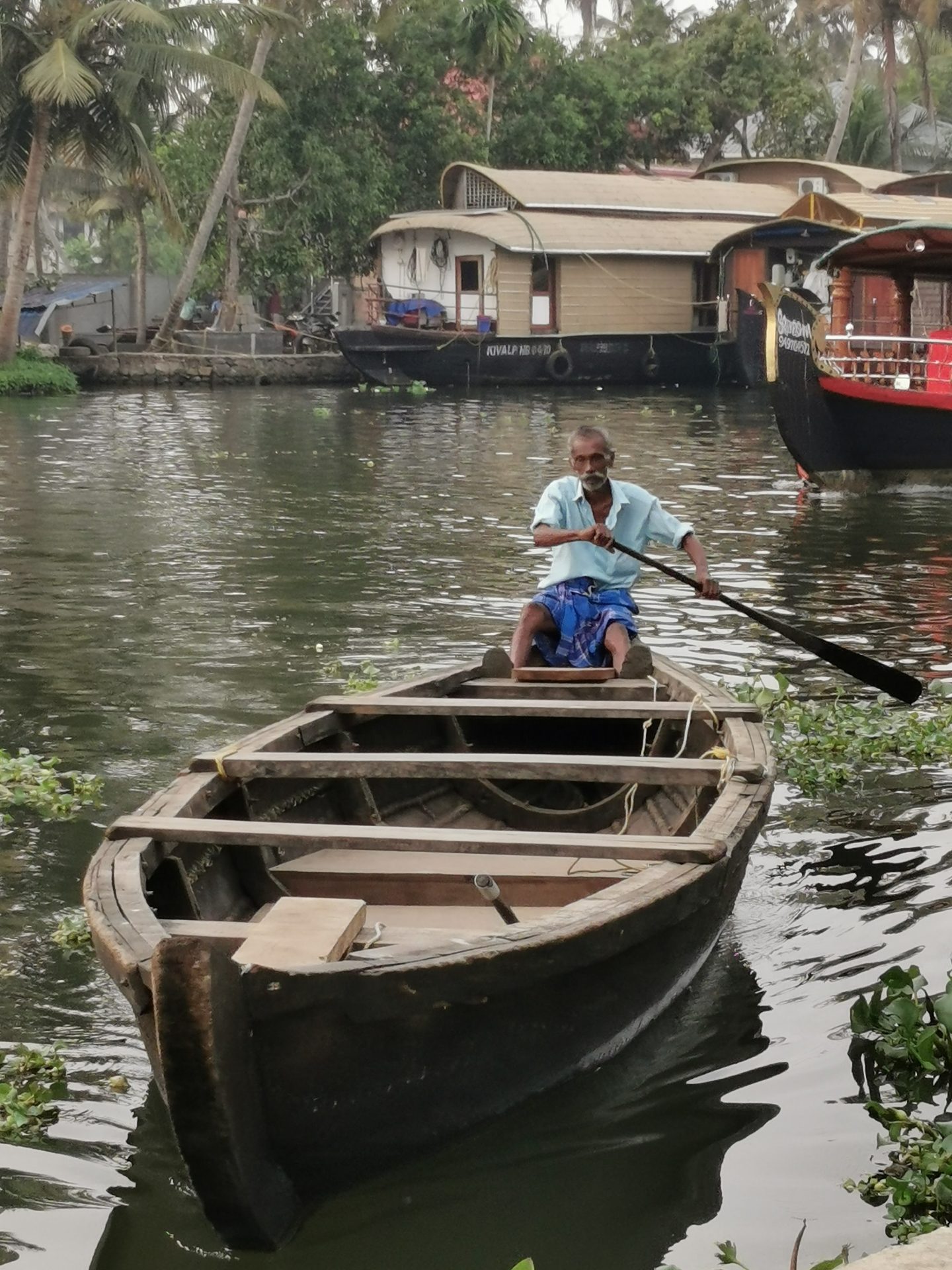
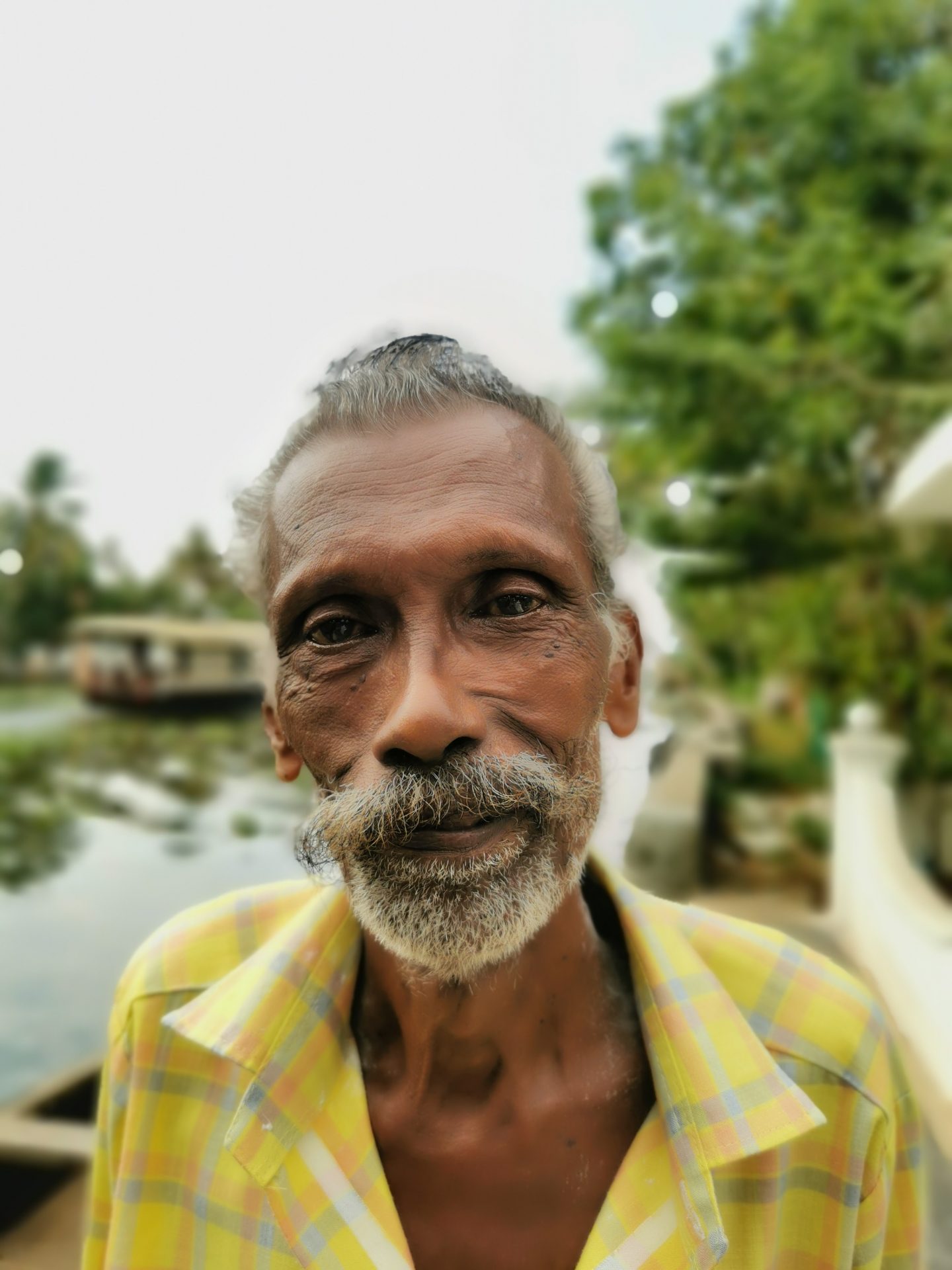
We extend two nights at Bamboo Lagoon to four. The canal is a major thoroughfare for boats from the city to Punnamada lake so there’s a constant flow of houseboats, pleasure boats and commercial craft. There are many birds; white egrets, Brahminy Kites and Indian Pond Herons or Paddy Birds – not a flattering name for a bird with great green legs, feet like a frog and a beautiful speckled breast. There’s vigorous washing of bodies and laundry at the water’s edge.
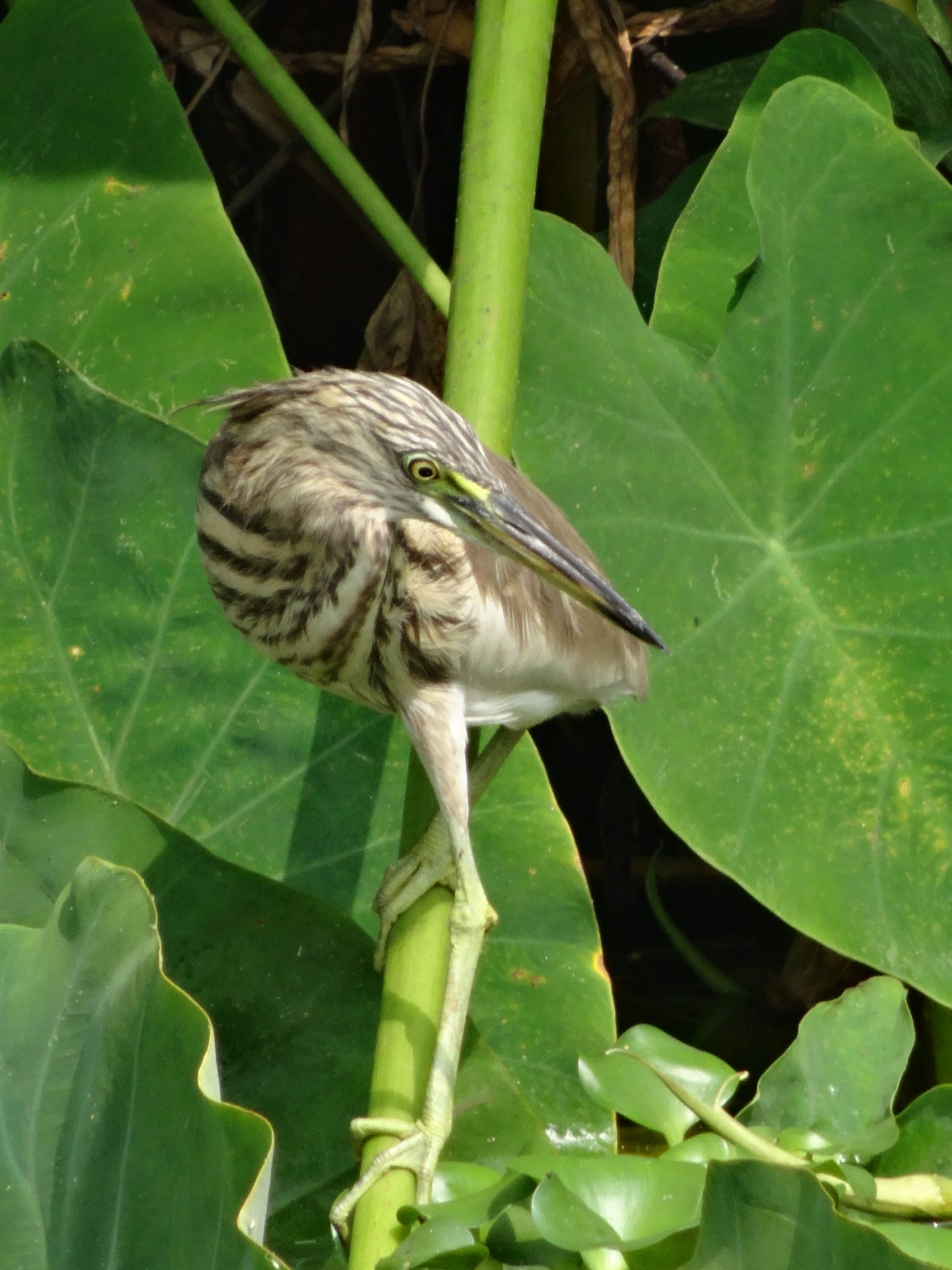
In the evenings we’re served drinks at a table in the softly illuminated garden by the canal.The lovely cheerful manager Sabitha has stocked up on Kingfisher beers for me, for which they charge but which won’t appear on the bill. We watch the crows and egrets flying to roost, and the occasional big fruit bat, bigger than a crow, heading out for the night to feed. Jo recently acquired a phobia about bats (it’s a long story) but she’s still keen to get a decent photograph of one. Her best chance was when one flew overhead but she wasn’t ready for it. Families, couples and party groups on the passing houseboats wave to us and shout ‘Hello, where are you from?’ as they pass.
There is a resident pooch, an old grey black mongrel with only one eye and a bad skin complaint. He shuffles about slowly and will go away if you tell him to f**k off nicely. I’d stroke him but I might catch something. He lies in the shade all day and I see him at probably his most active period, now, at dusk before he finds a corner in which he’ll sleep all night. He’s not malnourished so somebody’s giving him food. I later learn from a waiter that he lives next door and that he gets hotel breakfast scraps but has to pay for anything else (the waiter’s joke).
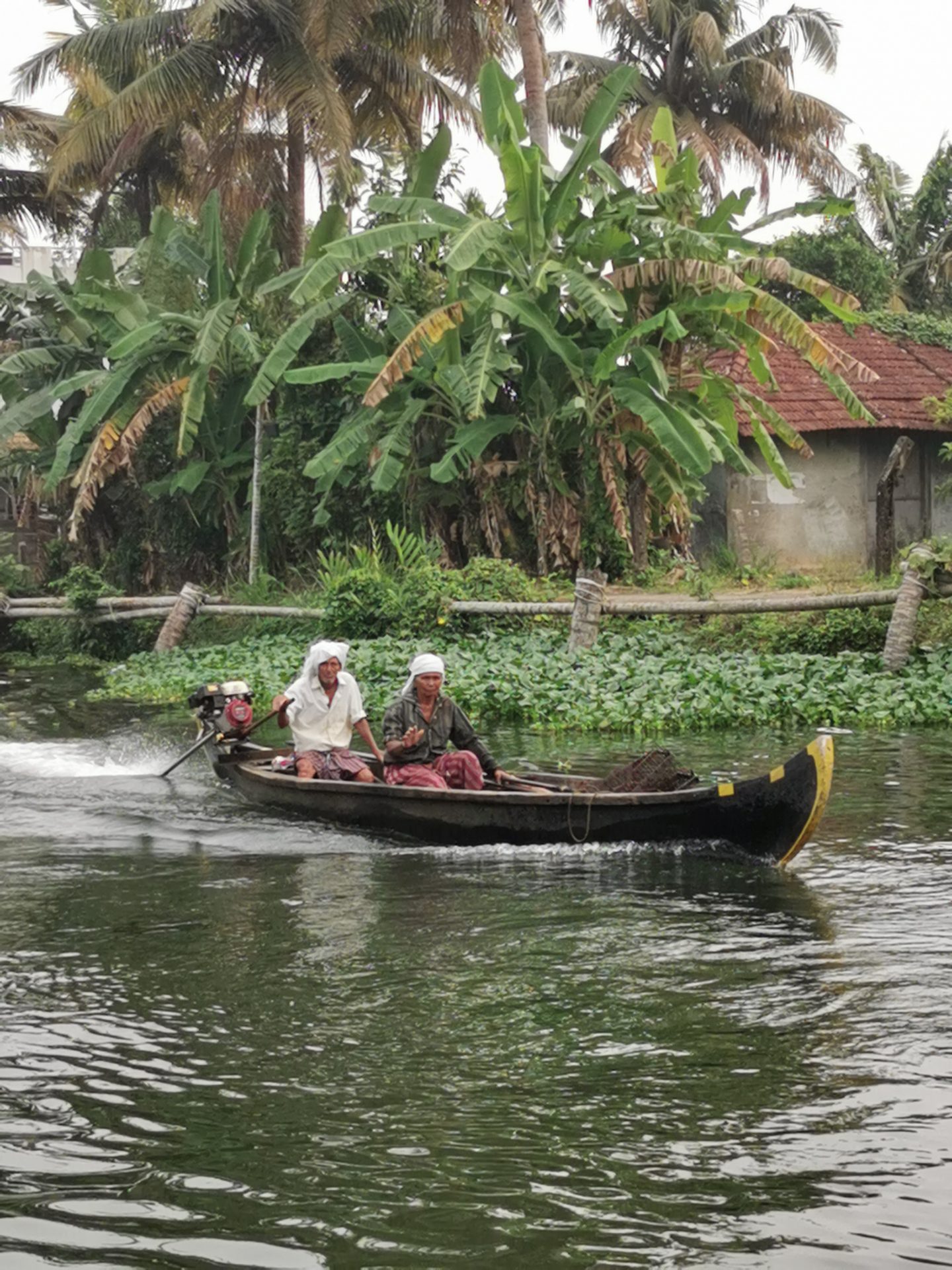
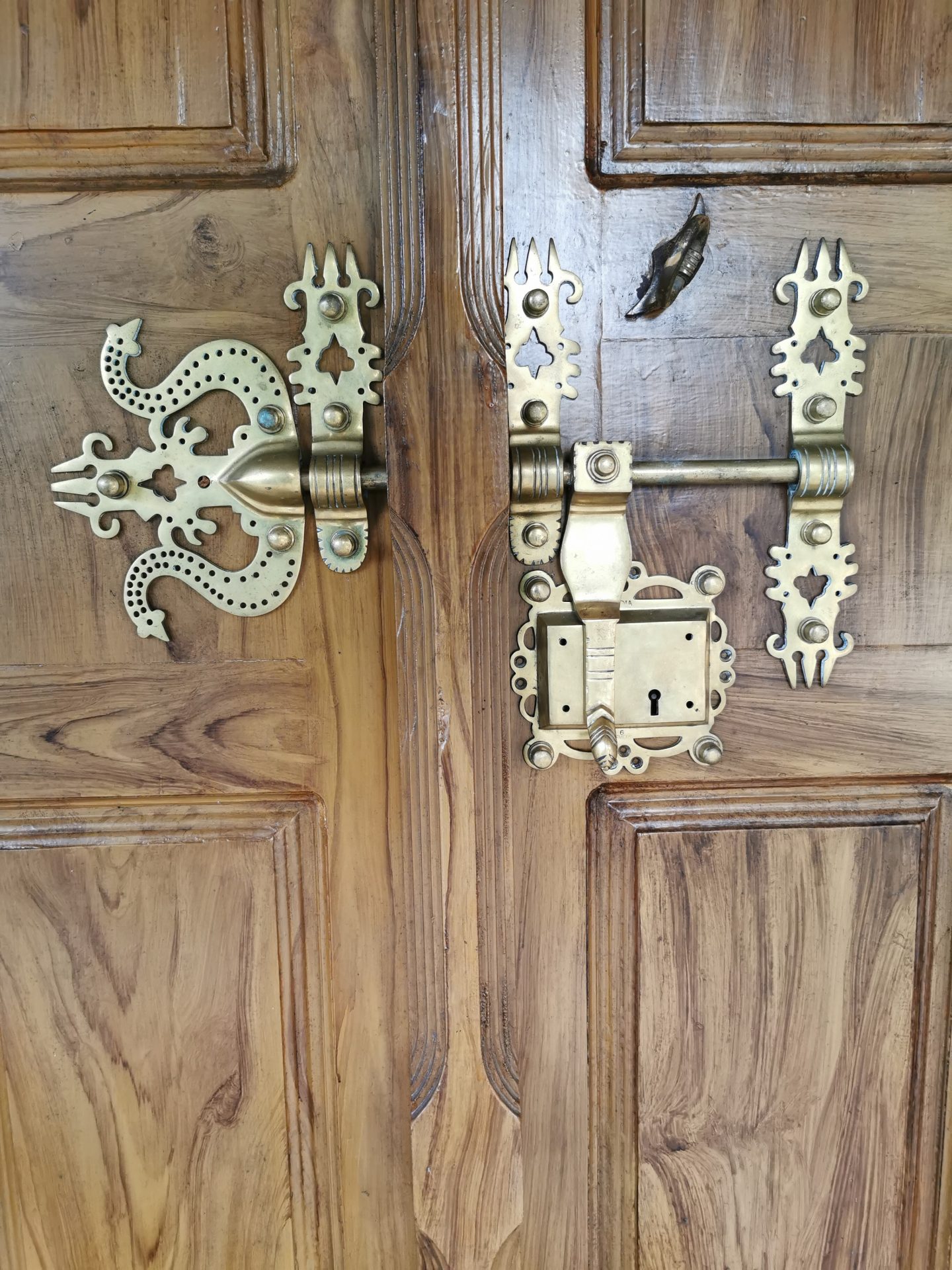
We’re sitting at a table in the shade of a tree, drinking afternoon tea. Loose leaf Keralan tea is wonderful tea and it’s disappointing when we’re served a tea bag. The tea at Bamboo Lagoon is the real deal – very hot, dark and bitter, no milk, no sugar, served in small fluted glasses. There’s a woman across the water, at the side alley of her single storey house where it meets the canal. She’s holding a big black bin bag which she upends into the canal. The contents are a combination of what we would call landfill, recyclables and organic waste. I know, this is another account of rubbish and pollution. But bear with me – they’re all subtly enlightening. Some of this garbage immediately sinks, some slowly absorbs water and semi submegres, the rest is flotsam. The woman now has a stick with which she persistently prods her refuse, trying to make items sink or float away on the slight current. The thing is, she doesn’t like to look at it, doesnt want it on her doorstep. It is offensive to her. In a strange way, she cares. Despite her actions there is hope.

We spend a lot of time by the pool, surrounded by palms and deciduous trees. There are only a couple of sun loungers and they’re mostly available – Indians not being big fans of sun bathing or swimming. Jo’s regime is to swim 100 lengths every morning – keeping track of the lengths with an abacus system of five pebbles. Sometimes, if I’m bored, I’ll rearrange the pebbles – drives her nuts.
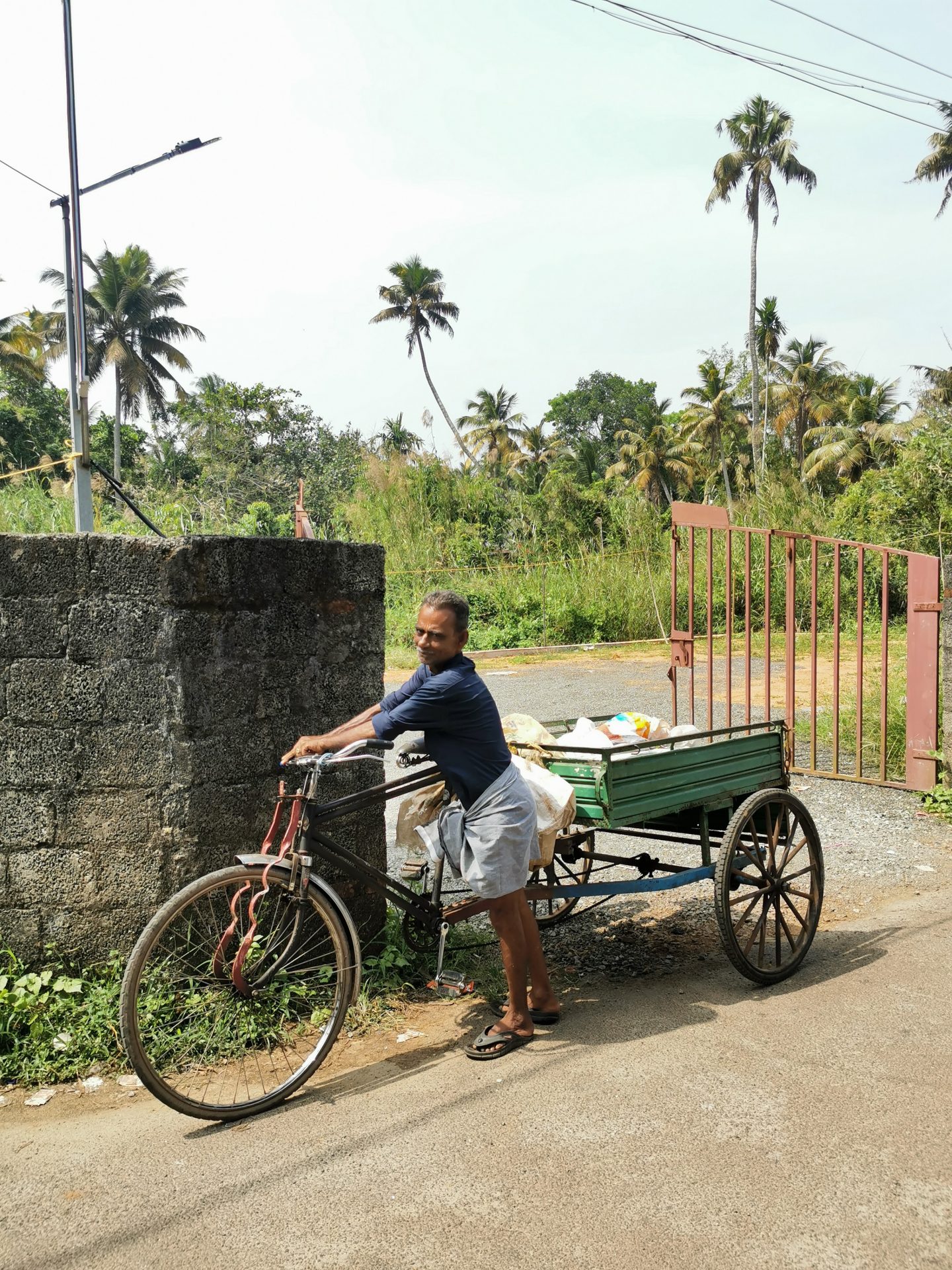
The food at our hotels and homestays has been variable. Vegetarian predominates: carrot or cabbage thorans (grated vegetables cooked with shallots and spices) are wonderful, as are Jo’s favourite; onion uttapams (an Indian pizza made with dosa batter, onions, green chillies, coriander and garam masala) and masala dosas (a thin almost crispy pancake made of rice, lentils, potato, fenugreek, and curry leaves, served with chutneys and sambar).The vegetables are fabulous and fresh. The only downside for me is curry every day for breakfast. We stop regularly at a fruit stall where I buy biscuits, bombay mix, pineapples, watermelons, bananas, grapes and dates if they’re any good. That lot, and whisky and I’m perfectly happy. Breakfast, lunch and dinner at Munroe Palace was a thin yellow potato curry gruel and a plastic dish of chapatis. Other than dinner I survived on my supplements. On the third and final day Jo informed me that for lunch, the potato has been replaced by chickpeas – I couldn’t wait for dinner.
Here at Bamboo Lagoon, the food is great. We dine in for three nights and must order in advance as fresh produce is purchased to order and delivered together with a supply of beer by the ferryman. Dishes include kadai veg, onion pakoda (spicy onion bhaji), paneer butter masala, gobi manchurian (battered cauliflower in a sauce), ginger chicken (our only meat dish and boney), bindi (okra) fry and tomato fry.

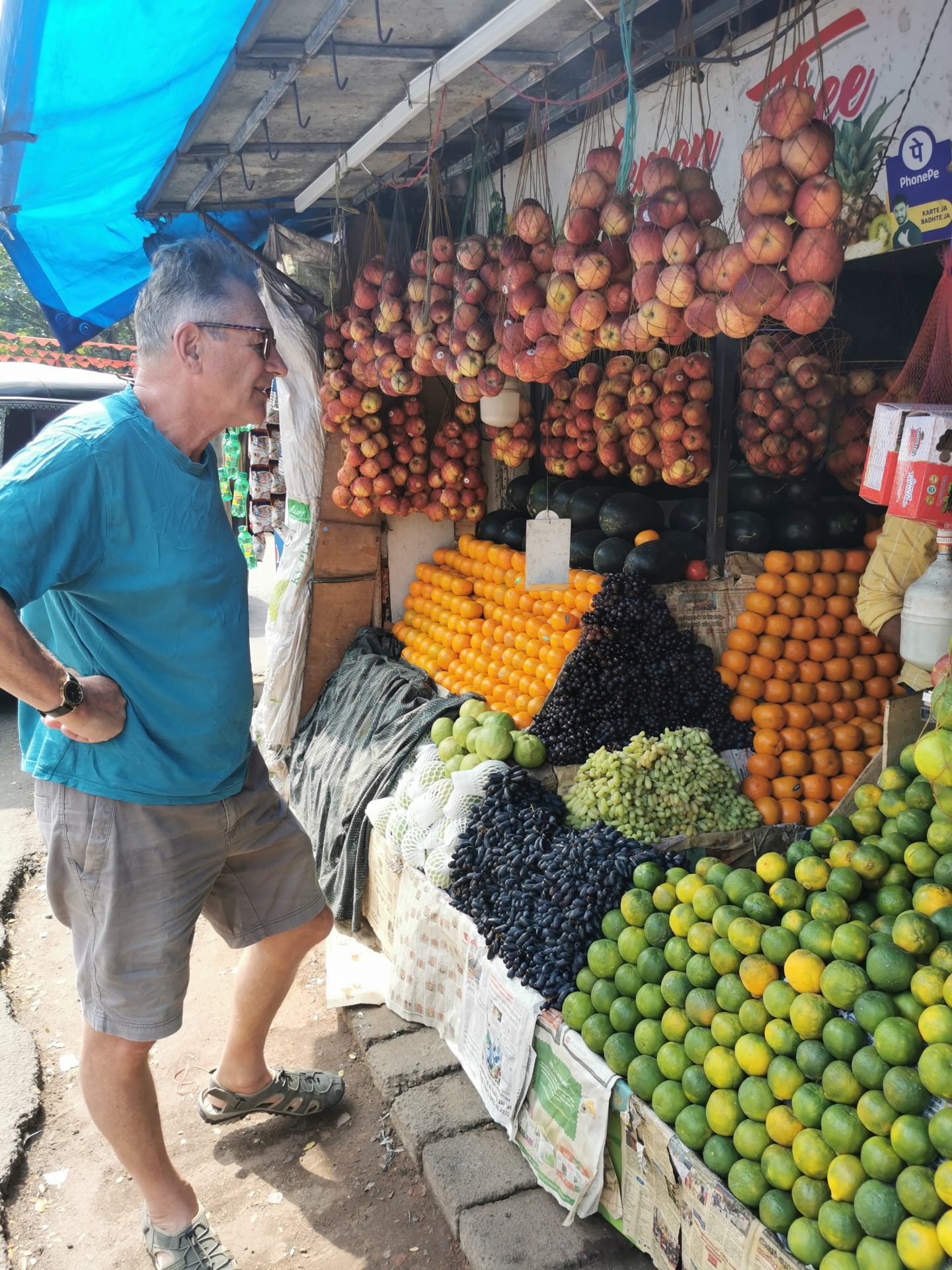

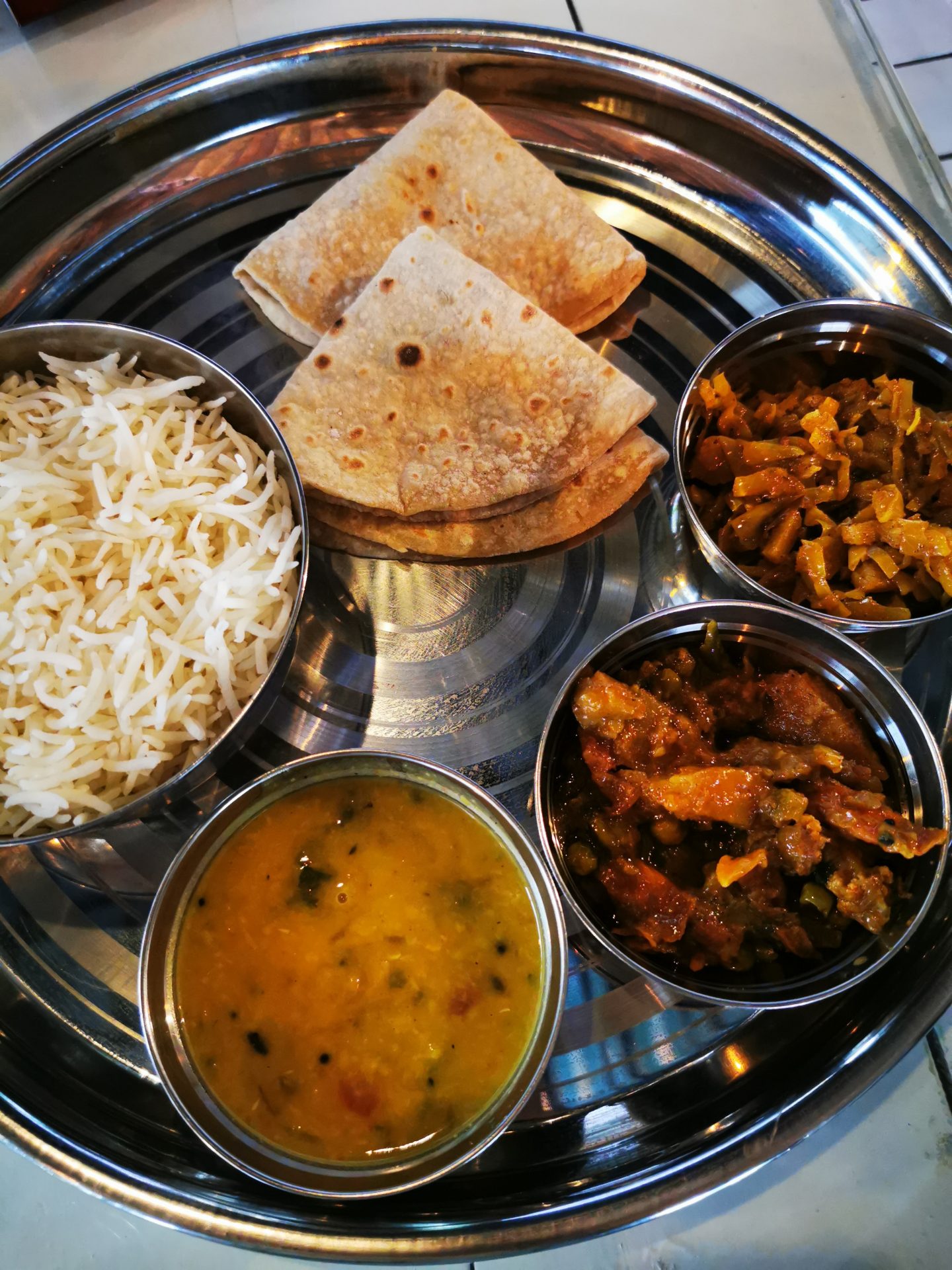
After four nights at Bamboo Lagoon we’re on a short 90 minute train journey to Ernakulam, the mainland cosmopolitan district of Kochi (Cochin) City. Indian passenger trains are very long – about 30 carriages. If you get it wrong and find yourself fifteen carriages away from a 2nd class non A/C carriage, you must board where you can. On this occasion it’s 2nd class A/C and the conductor hits us with a penalty fare.
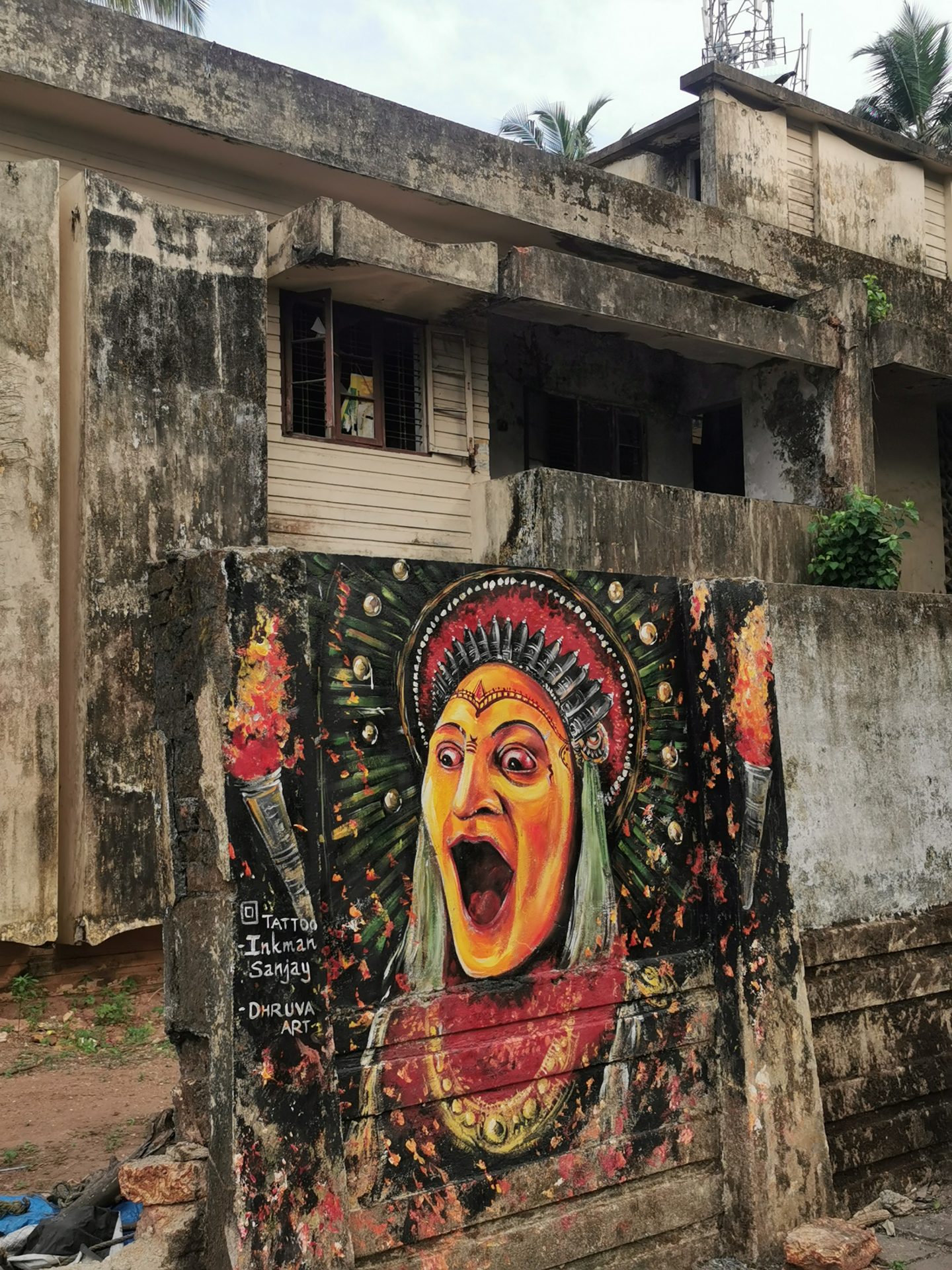
Kochi is the most densely populated city in Kerala. A major port, it’s the financial, commercial and industrial capital of the state. Its history follows that of Imperial occupation similar to much of south west India. The fort itself was built by the Portuguese in 1503. In 1683 the Dutch captured the territory from the Portuguese, destroying many Portuguese institutions, particularly anything Catholic. The Dutch were, in turn, defeated by the British in 1795. Foreign control of Fort Kochi ended in 1947 with the Indian independence.
We are travelling to Fort Kochi by ferry. There are two long queues at the ticket counter – one for men and one for women. We’re slowly moving up the queue when the ticket counter closes and everyone runs as another opens at the other end of the terminal building. The fare for the 30 minute ferry crossing is a pittance. It departs in ten minutes.
The rusty ferry has one big cabin with rows of fixed seats for maybe 200 passengers. The captain and his crew are up front. We’re seated. A steady stream of passengers is boarding together with luggage, bags of produce and bicycles. All the seats are taken. The isles are fully occupied with passengers crowded up against the captain and crew. We are fully laden but people continue to board. With some difficulty the doors are secured, the ropes are cast off and, in a cloud of blue diesel fumes, we’re off. There’s a slight swell and the overladen vessel lurches heavily from side to side. It’s a 30 minute crossing in dense shipping lanes. We moor briefly at Willingdon Island jetty where nobody disembarks and more people and bicycles are squeezed aboard. We are surely a disaster about to sink. But there are thousands of crossings like this every day of every week without incident. I should relax and enjoy it. (Postscript: three months from now a ferry in Kerala will sink with the death of 22 people, many of them children).

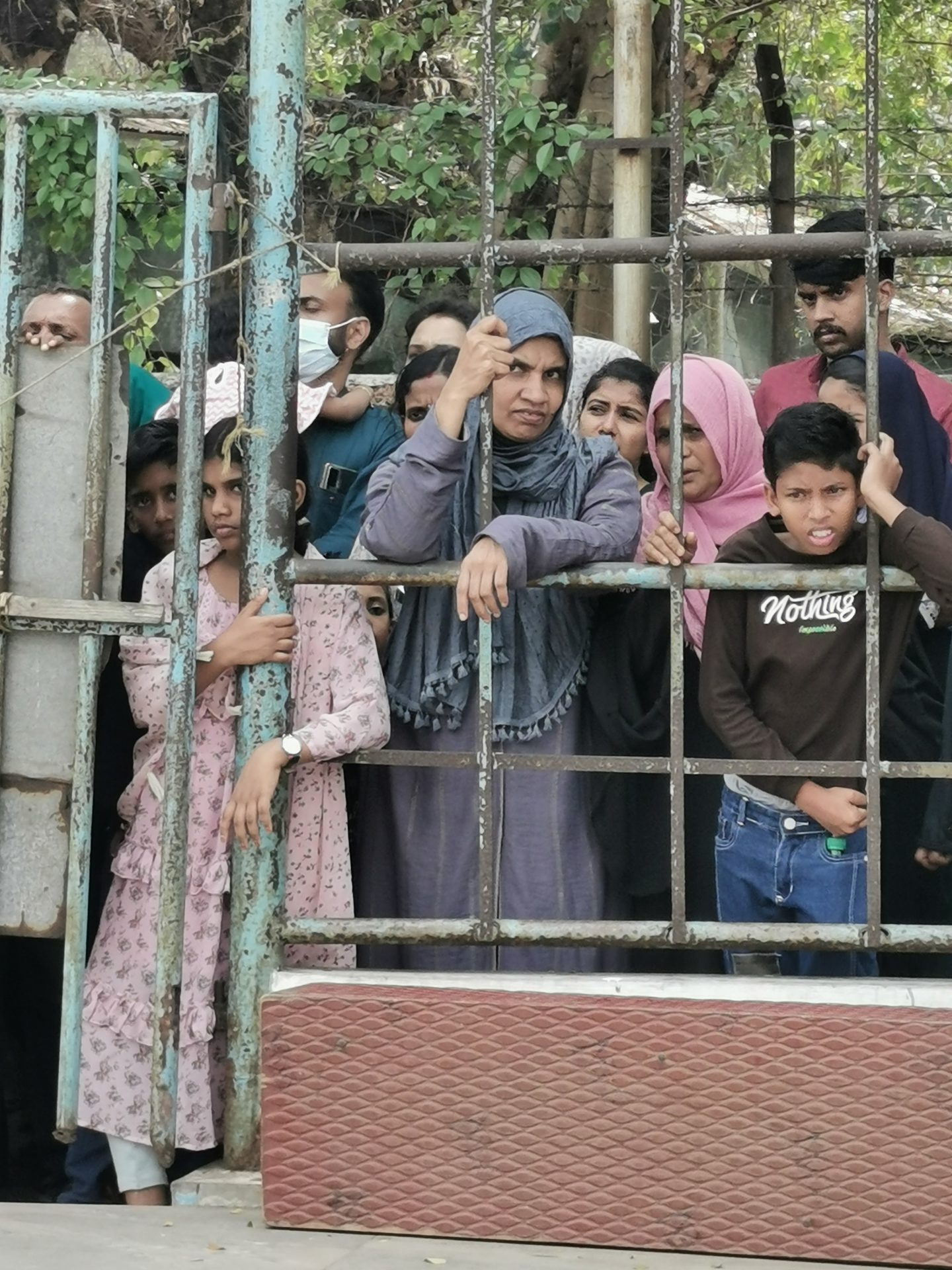
A rickshaw drops us off at a proper homestay. In India these days, small hotels, bed and breakfasts, hostels, are all called homestays. But they’re not. A homestay is somebody’s home with rooms allotted for guests. We have a bedroom on the second floor of a house in which live at least three generations of Kochiites. We’re seated on a sofa in the lounge/dining room where an uncle in a white vest is nursing a broken arm in a cast. His brother cancels our internet booking for the room so he doesn’t have to pay the commission and we pay cash. The woman of the house makes us tea. There are lots of people coming and going. I feel right at home.
It is past Mad Dog time (named after the once very famous 1930s Noel Coward song with the lyrics ‘Mad dogs and Englishmen go out in the midday sun’) and we’re exploring Fort Kochi on foot. We visit the harbour where huge cantilevered Chinese fishing nets droop over the waters like over-sized hammocks. Jo spots the grey entrails of a large animal (A horse? A cow?) floating near the shore. The colourful ornate old houses lining the narrow streets of Fort Kochi are of mixed Portuguese, Dutch and British styles .One street is named Petercelli Street – old Dutch for parsley. Parked up is a fine example of an Ambassador car and a beautiful Royal Enfield motorbike – a popular motorbike in a land of motorbikes – with a characteristic thumping exhaust sound. There are immense Rain trees with wide canopies and huge distinctive trunks. Introduced from South America, probably by the Portuguese, the famous Ammachiyal (Mother Tree) next to the old British parade ground is a Rain tree reputed to be 600 years old. We visit the local museum where hangs a wonderful 1829 map of Kerala drawn by James Horsburgh of the British East India Company. Here we find a miserable live turtle trapped in the flooded basement.
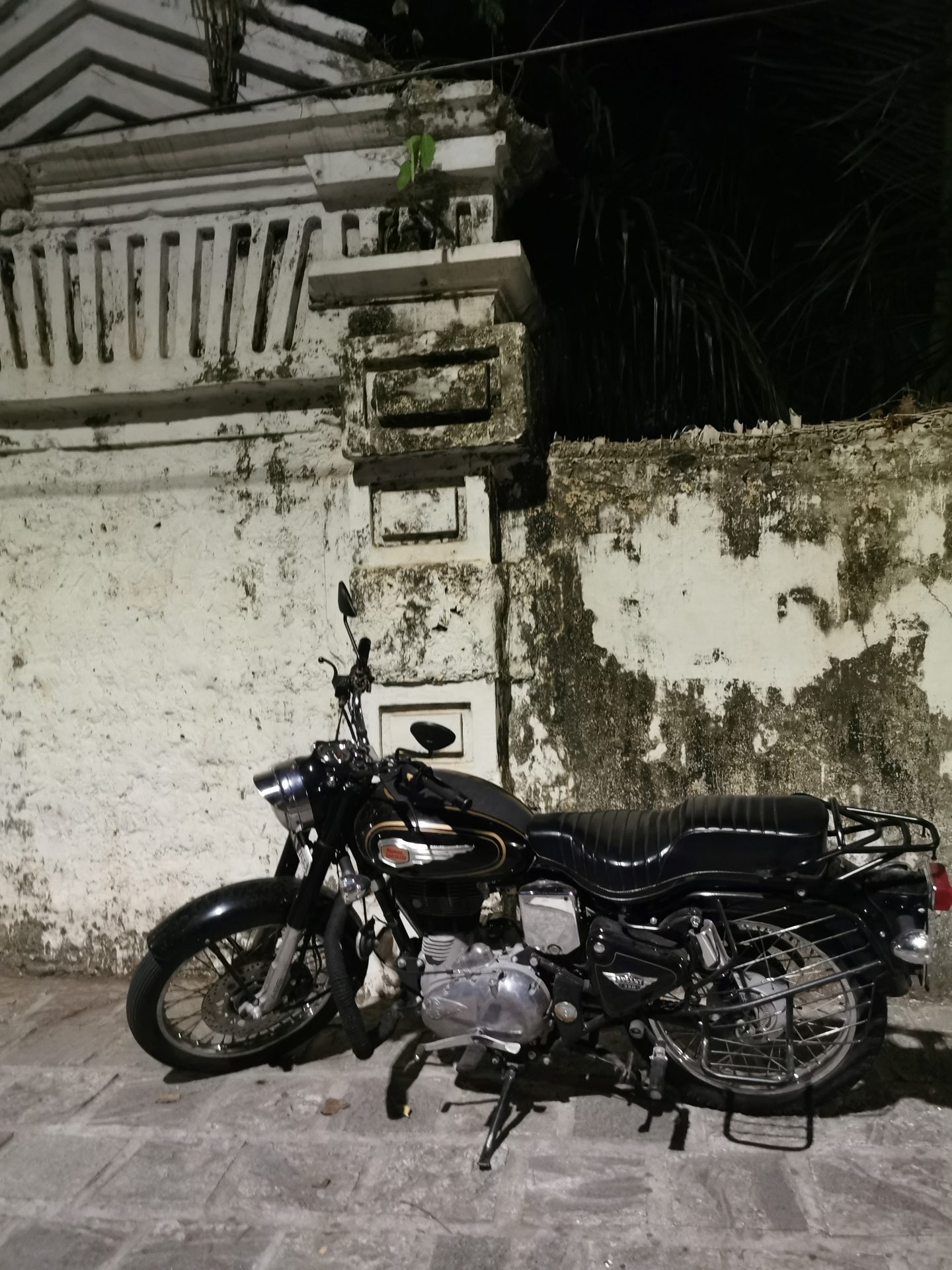
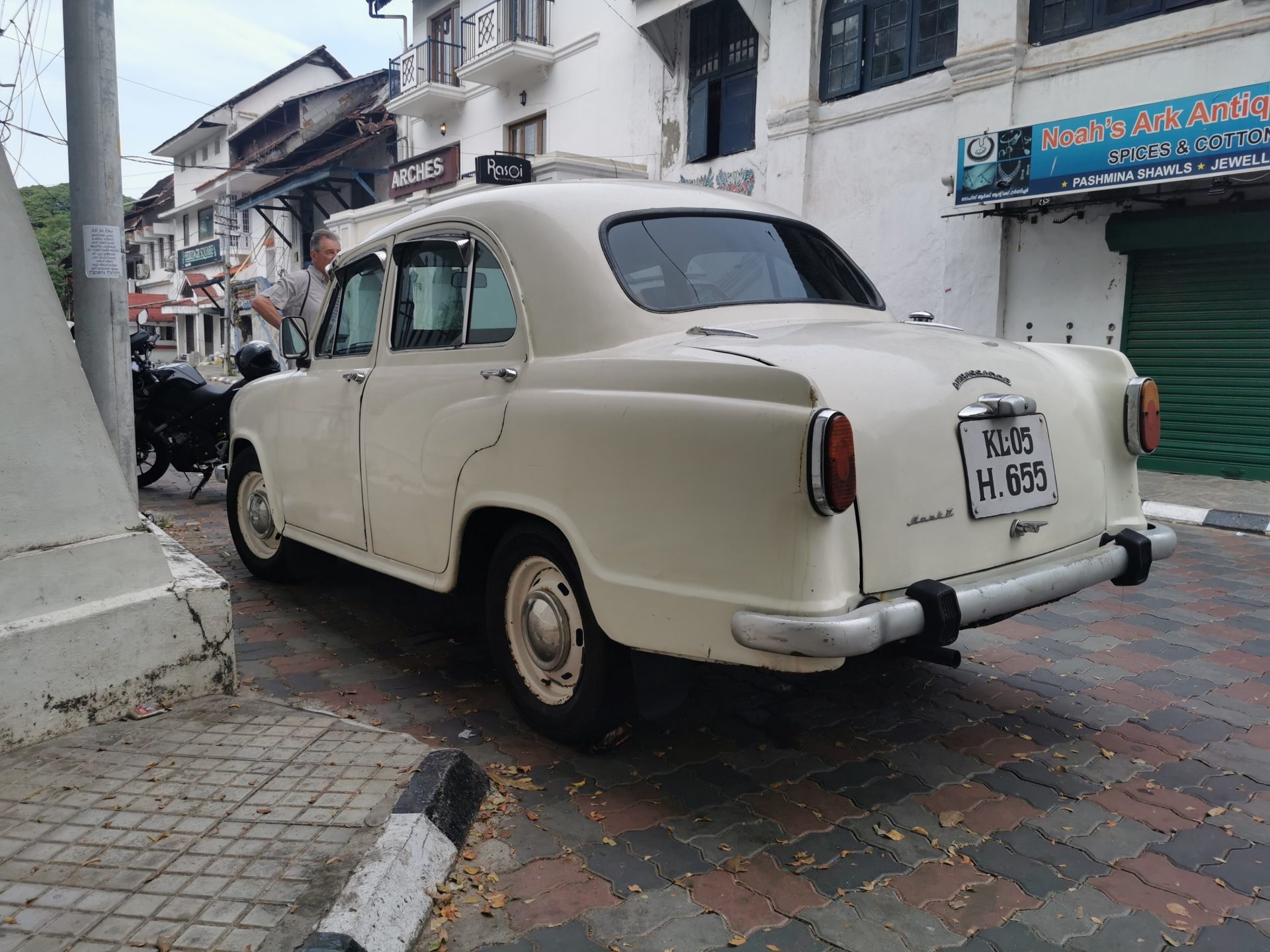
It’s Sunday morning and we’ve explored Fort Kochi. Using a ploy we discovered in South East Asia, for £7 each, we idle away the day at a peaceful and beautiful swimming pool in the lush garden of the Tower House Hotel. Strangely, it’s made all the more tranquil by the hustle and bustle of life on the other side of the high garden wall. Tomorrow we will leave the coast and head into the hills of Munnar.
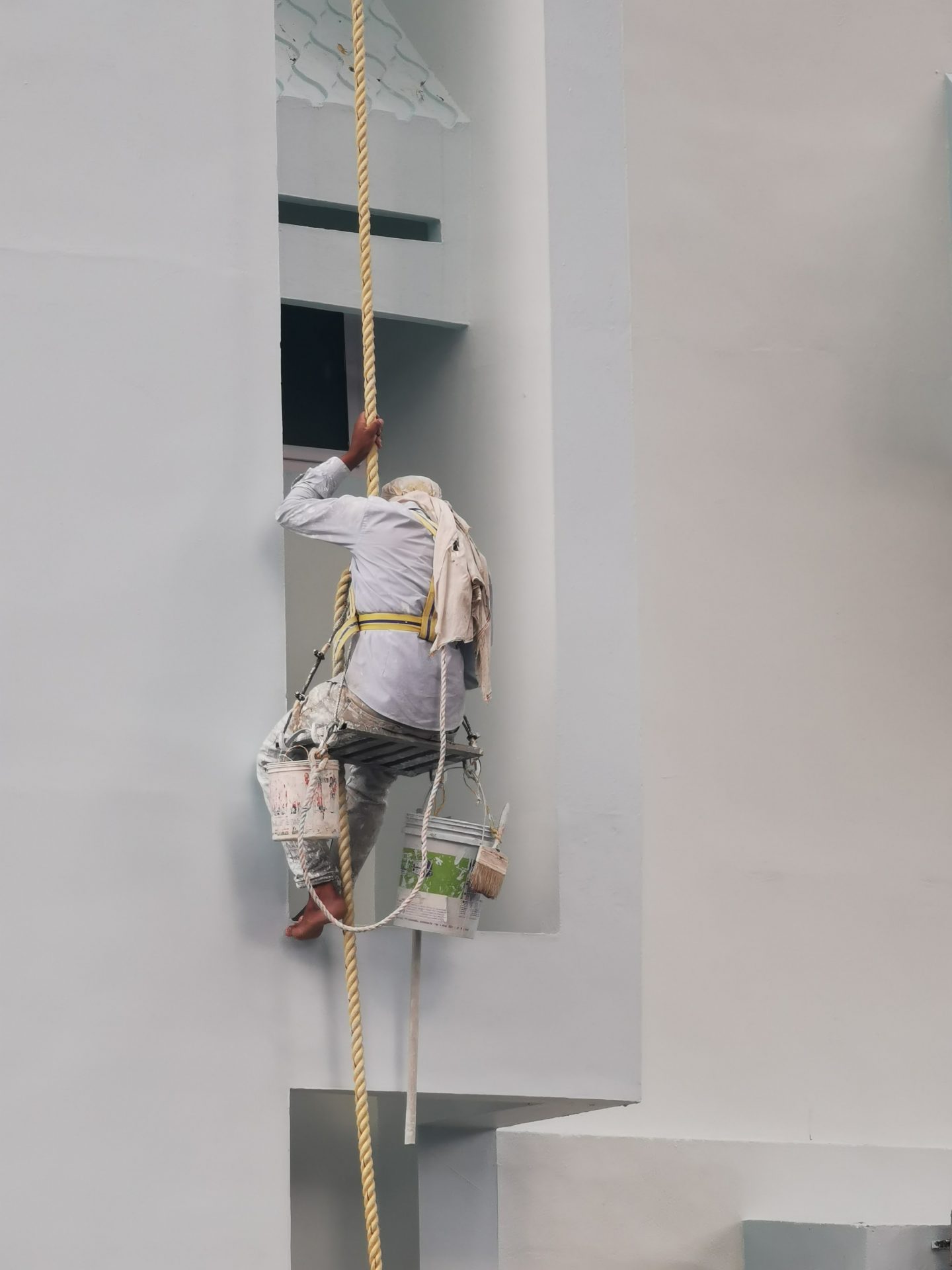
For the next stage of our Indian journey please visit The Munnar Hills.